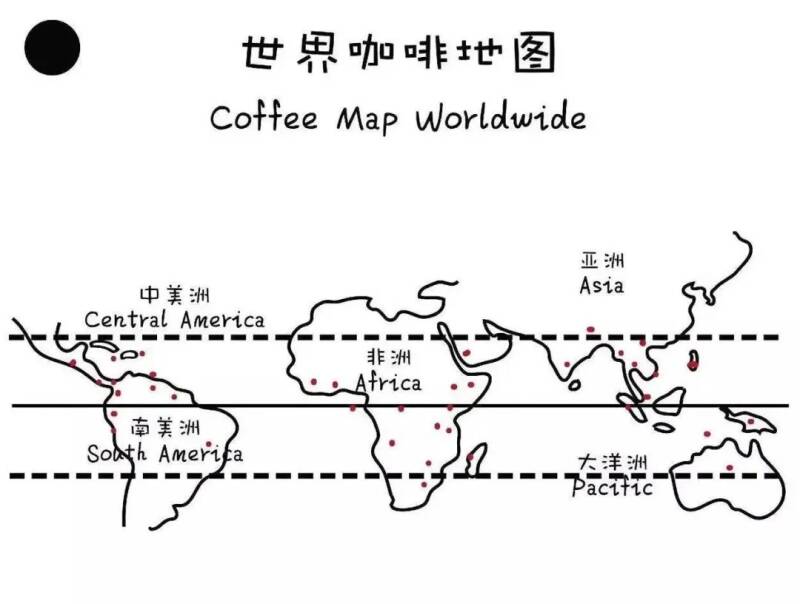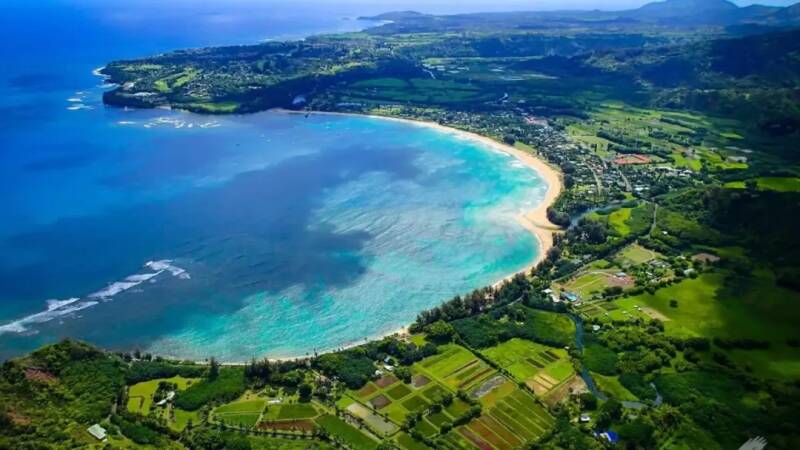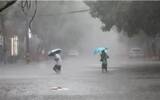Introduction to varieties in Kona coffee producing area, Hawaii, USA
As we all know, coffee is generally grown in the coffee growing belt, that is, the equatorial zone between the Tropic of Cancer and the Tropic of Cancer. However, in the United States, the climatic conditions are not very suitable for coffee growth, but some states in the United States have successfully grown coffee under characteristic conditions, such as Hawaii and California.

Hawaii State is the only archipelago state in the United States, consisting of 8 large islands and 124 small islands in the central Pacific Ocean, 3700 kilometers from the United States mainland.
The Hawaiian islands are formed by volcanic eruptions, of which Hawaii is the largest island. There are also two active volcanoes on the island, with a forest cover of nearly 50%. Hawaii has a tropical maritime climate, with monsoon conditions all the year round, with an annual temperature of about 26 ℃-31 ℃. The temperature does not change much and there is no season. It is the coldest in February and March and the hottest in August and September.

The main industries in Hawaii are tourism and agriculture, which is the pillar of the local economy, mainly producing sugar cane, pineapple, coffee, bananas and so on.
According to historical records, the first coffee trees were brought to ouhu Island (Oahu) in the early 19th century, and bourbon varieties were brought to Greater Hawaii in the late 1820s, and the first coffee-centric estates were established over the next decade.
Earlier, Hawaii's production was relatively high, and when Brazil's coffee production fell due to frost, Hawaii's coffee production peaked at 6803 tons. At the end of the 20th century, with the decline in sugar cane and pineapple cultivation and the focus on boutique coffee, Hawaiian coffee began to develop and promote the market. But protected by American labor and wage regulations, coupled with the limited availability of farmland, the supply is small.
The most famous producing area of Hawaii is Kona (Kona). Kona produces more coffee than other islands and is more famous, so the Kona growing area is also known as the Kona Coffee Belt. Only coffee produced in this area can be called Kona coffee.
In Kona, coffee trees are planted on the slopes of Hualalai and MaunaLoa. There is fertile volcanic soil and natural shading conditions, farmers grow coffee on the hillside, because the hillside planting can not be mechanized, so it can only be planted and harvested manually.
Most of the treatments are washed with water. Hawaii's clean and sweet mountain spring water provides Kona coffee beans with the ideal conditions for water washing, which creates the bright and fresh appearance and pure and fresh taste of Kona coffee beans.
At present, the Kona producing area mainly grows the iron pickup variety, which was introduced from Guatemala in the 1890s. The iron tin card bean planted by Kona is huge, and it is also planted at an altitude of 600-1100m, compared with other coffee producing countries. Kona's planting altitude is low, but on the island of Hawaii, Kona is high altitude.
Some people have tried to transplant Kona's iron pickup to other islands, but because the temperature of other islands is too high and the altitude is too low, the iron pickup does not grow smoothly, so it cannot produce the soft and sour fragrance unique to Kona.
Important Notice :
前街咖啡 FrontStreet Coffee has moved to new addredd:
FrontStreet Coffee Address: 315,Donghua East Road,GuangZhou
Tel:020 38364473
- Prev

Do I need to sip when making coffee by hand? What is the sip of a cup test? What is the purpose?
Friends who have been immersed in cafes all year round or participated in cup testing meetings should have more or less heard sounds like "whoosh, whoosh, whoosh", right? Friends who are confused may think that this sound is like Japanese ramen sucking, a way to express the delicious food. But in fact, this is our desire to better feel coffee
- Next

Drought and pest attacks! Vietnamese coffee production may be further reduced
Recently, the World Meteorological Organization recently warned that extreme weather occurs frequently and climate change is hitting Asia hard. At present, some Asian countries such as China, Dubai and other cities experience extreme weather such as heavy rains, strong winds and floods, which have been severely affected. In South Asia, many countries such as Thailand, Laos, Vietnam and Indonesia have appeared.
Related
- Can artificial hand brewing replace the barista's real hand brewing coffee? What is the difference between making coffee with fake hands and making coffee with real hands?
- Can't sell it?! Coca-Cola gives up selling Costa!
- The brewing parameters of the world's top rose summer coffee, ratio, water temperature, grinding and sharing! Graphic teaching on Emerald Manor Rose Summer Brewing Method!
- Jasmine milk tea, a new cup of ice?! Netizen: Why don't you just sell ice cubes
- Is it necessary to buy a cloth powder for an espresso machine? Why should we evenly distribute the powder when extracting espresso?
- What is the grinding ratio, water temperature and powder amount needed to make Combo in Mocha pot coffee? Mocha pot is suitable for making coffee deep and light baked beans??
- Caught off guard! Starbucks '15-year-old store quietly closes!
- Naixue Drink drank a stone and claimed a claim was retaliated by the merchant?!
- What is the difference between a cake filter cup and a V60 conical filter cup? What are the advantages and disadvantages of the flat-bottomed filter cup brewing solution?
- What is the difference between fine coffee powder and medium coarse coffee powder? Do I need to sift out the fine coffee powder for making coffee by hand?

